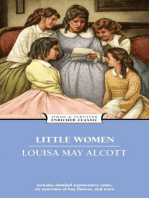Professional Documents
Culture Documents
Labor Finals Reviewer
Labor Finals Reviewer
Uploaded by
Koko0 ratings0% found this document useful (0 votes)
218 views14 pagesLabor I
Copyright
© © All Rights Reserved
Available Formats
PDF, TXT or read online from Scribd
Share this document
Did you find this document useful?
Is this content inappropriate?
Report this DocumentLabor I
Copyright:
© All Rights Reserved
Available Formats
Download as PDF, TXT or read online from Scribd
Download as pdf or txt
0 ratings0% found this document useful (0 votes)
218 views14 pagesLabor Finals Reviewer
Labor Finals Reviewer
Uploaded by
KokoLabor I
Copyright:
© All Rights Reserved
Available Formats
Download as PDF, TXT or read online from Scribd
Download as pdf or txt
You are on page 1of 14
I. Non-diminution of benefits c. Who are not entitled/Who are not covered by the 13th M.P.
- Prohibits employers from eliminating or reducing the benefits Law
received by their employees provided such benefits are based on 1. MANAGERIAL EMPLOYEES
any of the following: - Except: when they are so granted under an employment
1. Express policy; contract or a company policy or practice.
2. Written contract; or 2. GOVERNMENT and any of its political subdivisions, including
3. Company practice. GOCCs
a. Requisites: it must be shown that the- - Except: those corporations operating essentially as
1. Grant of benefit is founded on policy or has ripened into a private subsidiaries of the government
practice over a long period; 3. EMPLOYERS ALREADY PAYING THEIR EMPLOYEES 13th
2. Practice is consistent and deliberate ; M.P. or more in a calendar year or its equivalent at the time of
3. Practice is not due to error in the construction or the issuance of the Revised Guidelines.
application of a doubtful or difficult question of law; and 4. EMPLOYERS OF THOSE WHO ARE PAID ON PURELY
4. Diminution or discontinuance is done unilaterally by the COMMISSION, BOUNDARY OR TASK BASIS, and THOSE
employer. WHO ARE PAID A FIXED AMOUNT FOR PERFORMING A
b. Exceptions to Non-diminution of benefits SPECIFIC WORK, irrespective of the time consumed in the
1. Correction of error; performance thereof.
2. Negotiated benefits; - Except: where the workers are paid on piece-rate basis,
3. Wage order compliance; in which case, the employer shall be covered by the
4. Benefits on reimbursement basis; Revised Guidelines insofar as such workers are
5. Reclassification of position; concerned.
6. Contingent benefits or conditional bonus; and - Workers paid on piece-rate basis: Those who are paid
7. Productivity incentives a standard amount for every piece or unit of work
produced that is more or less regularly replicated without
II. 13th Month Pay Law regard to the time spent in producing the same.
a. Nature d. How computed
- Additional income granted to employees who are receiving the - Minimum Amount: Not less than 1/12 of the total basic
same. salary earned by an employee within a calendar year.
- Purpose is to increase real wages of the workers - Basic Salary: 1/12 of the employee’s standard monthly wage
- It is based on wage BUT NOT part of wage multiplied by their length of service within a given calendar
b. Coverage year.
- Under the law, all employers are required to pay ALL THEIR - Minimum Period of Service: Employee should have worked for
RANK-AND-FILE EMPLOYEES, a 13th Month Pay not later at least one month during a calendar year.
than 24 December of every year. e. What are included in the computation
- Domestic Workers are entitled under RA 10361 (Kasambahay 1. Total basic salary which includes:
Law) - all remuneration or earnings paid by the employer for
- Extras, casuals, adn seasonal employees are entitled. services rendered
Labor Standards Finals Reviewer
Atty. Buyco 2019-2020 Arimao | 1!
- does not include allowances and monetary benefits c. Minimum wage rates prescribed by law shall be the basic cash
such as cash equivalent of unused vacation and sick wages without deduction therefrom of whatever benefits,
leave credits, maternity leave, overtime, premium, night supplements or allowances which the employees enjoy free of
differential and holiday pay, premiums for work done on charge aside from the basic pay.
rest days and special holidays and COLA. d. Statutory minimum wage rates refer to the lowest basic wage
- except: these salary related benefits should be included rates that an employer can pay his workers, as fixed by the
in the computation of 13th M.P. if by individual or CB Regional Tripartite Wages and Productivity Boards (RTWPBs),
agreements, company practice or policy, the same are which shall not be lower than the applicable statutory minimum
treated as part of basic salary. wage rates.
2. Commission part of basic salary - commission paid in addition e. COLA refers to the level of prices relating to a range of everyday
to to the basic salary and has a clear direct or necessary items or the cost of purchasing the goods and services which are
relation to the amount of work actually done by the employee. included in an accepted standard level of consumption. It is a
- Note: benefit to cover increases in the cost of living.
i. Commission is NOT part of basic salary if it is in f. No work, no pay principle - this is the general rule.
addition to the basic salary and is in the nature of a - Exception is when it was the employer who unduly prevented
productivity bonus. the employee from working despite his ableness, willingness,
ii. If employee is paid on commission basis only: and readiness to work, or in cases where the employee is
EXCLUDED from receiving 13th M.P. locked out, illegally dismissed, or suspended.
III. Rules on Wages g. Wage vs. Salary
a. Attributes of Wage:
1. remuneration or earnings, however designated, for work done Wage Salary
or to be done or for services rendered or to be rendered; compensation for manual skill or compensation for higher or superior
2. capable of being expressed in terms of money, whether fixed labor level or employment
or ascertained on a time, task, piece or commission basis, or
other method of calculating the same; GR: not subject to execution or Not exempt from execution or
3. payable by an employer to an employee under a written or ganishment (Art. 1708, CC) garnishment (applies to
unwritten contract of employment for work done or to be done EX: debts incurred for food, shelter, commission and other
or for services rendered or to be rendered; and clothing and medical attendance remuneration received by a
4. includes the fair and reasonable value, as determined by the managerial employee.
DOLE Secretary, of board, lodging, or other facilities
customarily furnished by the employer to the employee.
b. Wage rate includes COLA as fixed by the RTWPB but excludes
other wage related benefits such as OT pay, bonuses, night shift
differential pay, holiday pay, premium pay, 13th M.P., leave
benefits, among others.
Labor Standards Finals Reviewer
Atty. Buyco 2019-2020 Arimao | !2
i. Payment of Wages (Arts. 102-105)
h. Facility vs. Supplement 1. Form: Only in legal tender; Payment in check or money order
shall be allowed when such manner is customary on the date of
Facilities Supplements effectivity of the Labor Code.
2. Direct Payment of Wages
includes articles or services for means extra remuneration or - GR: direct payment to the workers to whom they are due.
the benefit of the employee or his special privileges or benefits - EX: (a) In cases of force majeure; and
family but does not include tools of given or received by the laborers
(b) Where the worker has died, then payment is made to
trade or articles or services over and above their ordinary
primarily for the benefit of the earnings or wages. his heirs without necessity of intestate proceedings.
employer or necessary to the 3. Burden of proof, in case of alleged non-payment: Employer
conduct of the employer’s business. has burden of proving payment.
4. Other requirements: IRR requires the employer to keep a
items of expense necessary for the Not deductible from wage payroll, it must show the length of time to be paid, the pay rate,
laborer’s and his family’s existence
the amount actually paid, and the employee should sign the
and subsistence which form part of
payroll.
the wage and when furnished by
the employer, are deductible 5. Time of payment:
therefrom. - At least every 2 weeks or twice a month at intervals not
exceeding 16 days.
Can only be deducted from wage Main difference between F&S: the - No employer shall make payment with less frequency than
if: purpose it serves. once a month.
1) facilities customarily furnished - Payment on a daily basis is allowed, but discourage because it
by trade; Food supplied to crew members
is inconvenient for the employer.
2) acceptance in writing by the is a supplement because it is a
employee necessary matter in the
- If task cannot be completed within 2 weeks, condition of
3) facilities charged at a fair and maintenance of the health and payment;
reasonable value efficiency of the crew during (a) payment made at intervals of not exceeding 16 days,
voyage. in proportion to the amount of work completed;
Subsidized meal: subsidy shall not (b) final settlement is made upon completion of work
be less than 30% of the fair and 6. Place of Payment
reasonable value of the facility, but 1. GR: shall be at or near the place of undertaking.
not more than 70% of the fair and 2. EX: allowable in a place other than the workplace, only in
reasonable value thereof. instances where -
(a) It cannot be effected therein due to deterioration of
peace and order conditions, or of actual or
impending emergencies caused by fire, flood, epidemic,
or other calamity rendering payment thereat impossible;
Labor Standards Finals Reviewer
Atty. Buyco 2019-2020 Arimao | 3
!
(b) When employer provides free transportation to the - For loss or damage;
employees back and forth; - For agency fees from non-union members who accept the
(c) Under any analogous circumstances; benefits under the CBA negotiated
3. NOTE: No employer shall pay his employees in any bar, night - Union service fee
or day club, drinking establishment, massage clinic, dance - Deductions with written authorization of the employee for
hall, or other similar places where games are played with payment to third person
stakes of money or things representing money - Deductions for value of meal and facilities
- EX: For persons working in the said places. - Deductions for premiums of SSS, PhilHealth, employees’
4. Payment through banks: allowed under written compensation and Pag-Ibig
permission of the majority of the employees. - Withholding tax
- Companies with 25 or more employees; - Withholding of Wages due to debt to the employer which is
- Place of business is within 1km radius to a commercial, already due.
rural, or savings bank. - Deductions ordered by the Court
- Upon request of employee or union, the bank shall issue - Salary deductions of a member of a cooperative
a certificate of record of payment of wages of a particular 6. Deposit Requirement (Art. 114)
worker or workers for a particular payroll. - GR: Deductions from the employee’s wages may be made for
j. Prohibitions regarding wages cash bonds or deposits. However, the employer is not allowed
1. Article 112 of the Labor Code: Non-interference by the to unilaterally immpose upon its employees the giving of cash
employer in the disposal by employees of their wages. bonds or deposits.
- No employer is allowed to interfere with the freedom of any - EX: To justify such imposition, the employer should first prove
employee to dispose of his wages or to oblige them to patronie that it falls under either:
any store or avail any services of a person. a. That it is engaged in such trades, occupations or
2. Wages not subject to execution or attachment. business where the practice of making deductions or
- Except when it is made for debts incurred for food, shelter, requiring deposits is a recognized one; or
clothing, and medical assistance. b. That the cash bond or deposit is necessary or
3. Prohibition on employee to make any deductions from the desirable as determined by the DOLE Secretary in
wage without knowledge or authorization of the employee. appropriate rules and regulations.
4. Permissible Deductions from Wages (Art. 113) c. Labor Advisory No. 11, s. 2014: the practice of
- worker is insured with his consent by the employer, and the allowing deductions or requiring deposits from
deduction is to recompense the employer for the payment of employees to answer for reimbursement of loss or
premium. damage on tools, materials, or equipment supplied by
- union dues, where the right of the worker or his union to check- the employer is recognized or allowed in private
off has been recognized by the employer or authorized in security agencies, as the only recognized and
writing by the individual worker concerned; reasonable industry practice given the nature of the
- employer is authorized by law or regulations issued by the service/business.
DOLE Secretary. - Due Process is required before deduction from deposit:
5. Other Permissible deductions (Art. 114): - Conditions to be observed:
Labor Standards Finals Reviewer
Atty. Buyco 2019-2020 Arimao | 4
!
a. The employee concerned is shown to be responsible 1) Request the employer to correct the alleged distortion
for the loss or damage; 2) Employer can either:
b. The employee is given reasonable opportunity to (a) Increase wage across the board; or
show cause why deductions should not be made; (b) Proportionate increase;
c. The amount of such deduction is fair and reasonable (c) Application of formula for resolving wage distortion
and shall not exceed the actual loss or damage; and d. Wage distortion must take place only within a region because
d. The deduction from the wages of the employees does wage orders are implemented per region (jurisprudence)
not exceed 20% of the employee’s wages in a week. e. Wage distortion is not a proper ground to be invoked in support
- Amount of deposit allowed: the maximum amount shall not exceed of a strike or lockout.
the employee’s one month basic salary. - Disputes arising from wage distortion resulting from wage orders
- Such may be deducted from the employee’s wages in an amount issued by the RTWPBs which are alleged in the notice of strike or
not exceeding 20% of the employee’s wages in a week. notice of lockout should be referred to the Labor Arbiter if not
- Refund of deposit: full amount shall be returned to the employee settled within 10 calendar days of conciliation by the NCMB.
within 10 days from his/her separation from the service. f. Wage distortion, when correctible
- The employer cannot legally be obligated to correct “wage
IV. Wage Distortion distortion” if the increase in the wages and salaries of the newly-
a. It contemplates a situation where an increase in prescribed wage hired employees was not due to a prescribed law or wage order
rates results in either of the following: but due to increases it voluntarily granted to them.
1. Elimination of the quantitative differences in rates of wages or - This would discourage an employer to adjust salary rates of a
salaries; or particular group of employees for fear that it would result to a
2. Severe contraction of intentional quantitative differences in demand by all employees for a similar increase, especially if the
wage or salary rates between and among employee groups in financial conditions of the business cannot address an across the
an establishment as to effectively obliterate the distinctions board increase.
embodied in such wage structure based on the ff. criteria: g. Formula for resolving wage distortion
(a) skills;
(b) length of service; or Minimum wage/Actual Salary = % x Prescribed increase = Distortion
(c) other logical bases of differentiation. Adjustment
b. Elements of Wage Distortion
1) An existing hierarchy of positions with corresponding salary h. Wage distortion, how rectified
rates; 1. In organized establishments - where the application of any
2) A significant change in the salary rate of a lower pay class prescribed wage increase by virtue of a wage order issued by the
without a concomitant increase in the salary rate of a higher RTWPB results in distortions of the wage structure within an
one; establishment, the employer and the union should negotiate to
3) The elimination of the distinction between the two levels; and correct the distortions.
4) The existence of the distortion in the same region of the (a) Resolved through grievance procedure under the CBA;
country. (b) If unresolved, through voluntary arbitration;
c. Wage Distortion (Process of Correction)
Labor Standards Finals Reviewer
Atty. Buyco 2019-2020 Arimao | 5
!
(c) Unless agreed upon by the parties in writing, such dispute 4. Requirements of economic and social development
should be decided by the Voluntary Arbitrator or panel of
Voluntary Arbitrators within 10 days from the time said VI. Job Contracting and Labor-Only Contracting
dispute was referred to voluntary arbitration. a. Two kinds of Labor-Only Contracting: (DO 174-17)
2. In unorganized establishments - in cases where there are no 1. No substantial capital or investments in the tools and equipments and
collective agreements or recognized labor unions, the employers work is necessary and desirable to the business of the principal; or
and workers should endeavor to correct such distortions. 2. Principal exercises control over the worker
(a) Settled through the National Conciliation and Mediation b. Labor-only contracting is illegal - prohibited under the law because it
Board (NCMB) deprives the employees to be recognized as regular employees, or from
(b) If it remains unresolved after 10 days of conciliation, acquiring security of tenure due to the intercession of a third party which
should be referred to any of the Labor Arbiters of the is the labor contractor.
appropriate branch of the NLRC. c. Permissible Job Contracting/ Legitimate Job Contracting
(c) NLRC shall conduct continuous hearings and decide the A person is considered engaged in legitimate job contracting or
dispute within 20 days from the time said dispute is subcontracting if the following conditions concur:
submitted for compulsory arbitration. (a) The contractor or subcontractor carries on a distinct and independent
3. Effect of pendency of wage distortion dispute - It shall not in business (he is a businessman) and undertakes to perform the job,
any way delay the applicability of any increase in prescribed wage work or service on its own account and under its own responsibility
rates pursuant to the provisions of the wage order. according to its own manner and method;
(b) Contractor is free from the control and direction of the principal in all
V. Wage Orders matters connected with the performance of the work except as to the
a. refers to the order promulgated by the RTWPB (Regional Board) pursuant results thereof;
to its wage fixing authority. (c) The contractor or subcontractor has substantial capital or investment;
b. “Prescribed increases or adjustments” refer to the amount of and
increases or adjustments in the wage rate of workers fixed by the (d) The service agreement between the principal and contractor or
RTWPB, which the employer is mandated to pay upon effectivity of a subcontractor assures the contractual employees entitlement to all
wage order. labor and occupational safety and health standards, free exercise of
c. When proper to issue wage order the right to self-organization, security of tenure, and social and welfare
- Whenever conditions in the region so warrant, the Regional Board benefits
investigate and study all pertinent facts and based on the prescribed
standards and criteria, shall proceed to determine whether a wage
order should be issued.
- Any wage order shall take effect after 15 days from its complete
publication in at least 1 newspaper of general circulation in the region.
d. Factors to consider for minimum wage fixing:
1. Needs of workers and their families
2. Capacity to pay (of employers)
3. Comparable wages and incomes
Labor Standards Finals Reviewer
Atty. Buyco 2019-2020 Arimao | 6
!
d. Extent of liability of principal for non-payment of wages and other - Art. 106 defines a contractor or subcontractor. Based on the definition,
legal obligations: the party which contracts with the principal is the “contractor” while the
party which subcontracts with the contractor is called a “subcontractor”.
Legitimate Job Labor-Only Contracting
- Contracting should therefore be correlated to the contractor while the
Contracting
word subcontracting should be used in relation to the subcontractor.
As to Payment of Wages Principal and legitimate Principal and labor only - But with DO 174-17, the terms may now be used interchangeably.
job contractor contractor 1) Contracting/Subcontracting refers to an arrangement whereby a
- joint and several - solidarily liable to the principal agrees to farm out to a contractor the performance or
obligation to ensure labor only contractor’s completion of a specific job or work within a definite or predetermined
that the employees are employees in the period, regardless of whether such job or work is to be performed or
paid their wages. same manner and
completed within or outside the premises of the principal.
extent that the
As to other legal Principal is not principal is liable to the 2) Contractor refers to any person or entity engaged in a legitimate
obligations responsible for any employees directly contracting or subcontracting arrangement providing services for a
claim made by the hired by him. specific job or undertaking farmed out by a principal under a Service
contractor’s employees Agreement.
Main Difference The law creates an The law creates an f. Three parties involved
employer-employee employer-employee - Trilateral relationship refers to the relationship in a contracting
relationship for a limited relationship for a arrangement where there is a:
purpose: to ensure that comprehensive 1) service contract for a specific job, work or service between the
the wages of the purpose: to prevent principal and the contractor;
contractor’s employees circumvention of labor 2) an Employment Contract between the contractor and its
are paid. laws, thus, the principal employees.
and labor only contractor - Parties are:
are solidarily liable for
1) Principal - refers to any natural or juridical entity whether an employer
ALL RIGHTFUL CLAIMS
or not who puts out or farms out a job or work to a contractor;
of the employee
2) Contractor
3) Contractor’s Employee - refers to the employee of the contractor hired
e. Dept. Order 174-17 is the IRR of the above articles. to perform or complete a job or work farmed out by the principal
- Dept. Circular No. 01-17 was issued to clarify the non-applicability of pursuant to a Service Agreement with the latter.
DO174-17 to BPO, KPO, LPO, IT infrastructure outsourcing, app dev’t, g. Rights of contractors’ employees
hardware/software support, medical transcription, animation services, 1) Security of tenure
back office operations/support, and the construction industry. 2) Safe and healthful working working conditions;
- PRRD issued EO 51-18 which seeks to implement only Art. 106 out of 3) Labor Standards such as but not limited to service incentive leave.
the four mentioned, of the Labor Code on contractualization. rest days, overtime pay, holiday pay, 13th month pay, and separation
e. Terms pay.;
4) Retirement benefits under the SSS or retirement plans of the
contractor/subcontractor;
Labor Standards Finals Reviewer
Atty. Buyco 2019-2020 Arimao | 7
!
5) Social security and welfare benefits; - employees still in - applies to past and
Workers involved
6) Self-organization, collective bargaining and peaceful concerted service present employees at
activities including the right to strike. - Employer-employee the time the complaint
h. Violation of said rights: principal deemed as the direct employer of the relationship is a is filed, without
employees of the contractor or subcontractor; it is a finding that the condition sine qua non demand for
contractor/subcontractor is engaged in labor-only contracting. (pre-requisite) reinstatement (if not,
case will be under
Labor Arbiter’s
VI. Administration and Enforcement Power of the DOLE vs. Adjudication of jurisdiction)
- purely seeking a
employment related disputes (Comparing Arts. 128 and 129 of the Labor
money claim for a
Code)
value not exceeding
P5,000, whether or not
Admin and Adjudication of there exists an
Enforcement Power of employment related employer-employee
DOLE disputes relationship at the time
(Art. 128) (Art. 129) - no maximum monetary - amount of mmoney
Jurisdictional Limits
Nature and Subject of - inspection of - adjudication thru amount for the claim must not exceed
Proceedings establishments and summary proceedings exercise of P5,000
issuance of orders tom after notice and enforcement power - Note: if claim exceeds
compel compliance hearing of claims for P5000 or there is a
with labor standards wages and benefits claim for
- enforcement of labor - proceedings regarding reinstatement: file with
legislation in general monetary claims which NLRC for hearing and
- proceedings are therefore involve only decision of the Labor
offshoots of labor standard laws Arbiter (Art. 224)
inspections done by - initiated by sworn - Secretary of Labore or - Regional director or any
Officers designated
labor officers complaints filed by any
any of his duly duly authorized hearing
interested party.
authorized officer of the DOLE.
representatives, who
may or may not be
Regional Directors.]
Appeal - Secretary of Labor and - NLRC
Employment
VII. Quasi-judicial jurisdiction of the DOLE
A. Exercised by the DOLE Secretary and DOLE Regional Directors
Labor Standards Finals Reviewer
Atty. Buyco 2019-2020 Arimao | !8
1. They can issue writ of execution and garnishment (Jethro Security 2) During a specified time beyond the period, after childbirth is
Corp. vs. Sec. of Labor, 2009) fixed pursuant to subparagraph (a) above, the length of which shall
be determined by the DOLE after consulting the labor organizations
and employers.
VIII.Power of the Regional Director to resolve issues related to presence or During the periods referred here:
absence of employment relations i. A woman worker shall not be dismissed or given notice of
A. The DOLE must have the power to determine whether or not the an dismissal, except for just or authorized causes provided for in
employer-employee relationship exists, and from there decide whether or this Code that are not connected with pregnancy, childbirth and
not to issue compliance orders in accordance with Art. 128(b) of the Labor childcare responsibilities.
ii. A woman worker shall not lose the benefits regarding her
Code. status, seniority, and access to promotion which may attach to
B. The law did not say that the DOLE would first seek the NLRC’s her regular night work position.
determination of the existence of the employer-employee relationship. Pregnant women and nursing mothers may be allowed to work at
(Radyo Bombo, 2012 ruling) night only if a competent physician, other than the company
physician shall certify tehir fitness to render night work, and specify,
in the case of pregnant employees, the period of the pregnancy that
IX. Night work for women, when allowed
they can safely work.
ART.154. COVERAGE
This chapter shal apply to all persons, who shall be employed or permitted or The measures refereed here may include transfer to day work
suffered to work at night, except those employed in agriculture, stock raising, where this is possible, the provision of social security benefits or an
fishing, maritime transport and inland navigation, during a period of not less extension of maternity leave.
than 7 consecutive hours, including the interval from midnight to 5am, to be
determined by the Secretary of Labor, after consulting the workers’
X. New Maternity Benefit Law and Other leaves enjoyed by female
representatives/labor organizations and employers.
employees
Night worker means any employed person whose work covers the period from ✓ 105-day expanded maternity leave law
10pm-6am, provided that the worker performs no less than 7 consecutive hours. ✓ Sec.3: all covered female workers in government and private sector, including
those in the informal economy, regardless of status or legitimacy of child, shall be
granted 105 days maternity leave with full pay and an option to extend for additional
Note that the law protects the workers by requiring: (a) the provision of certain 30 days without pay
facilities such as sleeping or lactation quarters and means of transport; (b) conduct ✓ In case the worker qualifies as Solo Parent under Solo Parents Welfare Act, the
of medical examination to determine fitness for night work; and © observance of worker shall be granted additional 15 days with full pay
legal process to decide appropriate action where a worker is found unfit for night ✓ Benefit cannot be deferred but should be availed of either before or after the
work. actual period of delivery
✓ Granted to female workers in every instance of pregnancy, miscarriage or
ART.158. WOMEN NIGHT WORKERS emergency termination of pregnancy, regardless of frequency provided that for the
Measures shall be taken to ensure that an alternative to night work is case of miscarriage or emergency termination of pregnancy, 60 days with full pay shall
available to women workers who would otherwise be called upon to perform be granted
such work:
a) Before and after childbirth, for a period of at least 16 weeks, which Other leaves enjoyed by female employees:
shall be divided between the time before and after childbirth; ✓ Maternity Leave Under SSS
b) For additional periods, in respect of which a medical certificate is ■ Available to female members of SSS who:
produced stating that said additional periods are necessary for the health a) give birth or suffers miscarriage/abortion; and
of the mother or child: b)Has paid at least 3 monthly contributions in the 12-month period
1) During pregnancy; immediately preceding the semester of her childbirth, abortion or miscarriage.
■ Benefit is equivalent to 100% of the average daily salary credit.
Labor Standards Finals Reviewer
Atty. Buyco 2019-2020 Arimao | 9
!
■ Duration of maternity leave:60 days for normal delivery; or 78 days
in case of caesarian delivery XII. Sexual Harassment in the workplace
■ To avail maternal leave benefit:
a) Employee should notify her employer of her pregnancy and the probable SH in Work Environment
date of her childbirth which notice shall be transmitted to the SSS; a) The sexual favor is made as a condition in the hiring or in the
b) Employer shall advance the payment within 30 days from the filing of the employment, re-employment or continued employment of said individual,
maternity leave application; and or in granting said individual favorable compensation, terms, conditions,
c) SSS shall reimburse the employer the amount paid upon receipt of promotions or privileges; or the refusal to grant the sexual favor results in
satisfactory proof of such payment and legality thereto. limiting, segregating or classifying the employee which in any way would
■ Such benefit can only be availed for the first 4 deliveries or discrminate, deprive or diminish employment opportunities or otherwise
miscarriage. It cannot be availed of simultaneously with sickness benefit. adversely affect said employee.
✓ Battered Woman Leave b) The above acts woulod impair employee’s rights and privileges
■ Allows the victim of violence, which may be physical, sexual or under existing LC; or
psychological, to apply for the issuance of a protection order to shiedl her c) The above acts would result in an intimidating hostile, or offensive
from further violence and provide her related reliefs. environment for the employee.
■ If such victim is an employee, she is antitled to a paid leave of up to
10days in addition to other paid leaves under the LC, other laws. Such SH in Education or Training Environment:
leave is extendible when the necessity arises as specified in the a) Against one who is under the care, custody or supervision of the
protection order. offender;
■ To apply, the employee has to submit a certification from the b) Against one whose education, training, apprenticeship or tutorship is
Punong Barangay or kagawad or prosecutor or the clerk of court that an entrusted to the offender;
action under RA 9262 hs been filed and is pending. c) When the sexual favor is made a condition to the giving of a passing
✓ 2 months Leave under the Magna Carta of Women grade, or the granting of honors and scholarships, or the payment of a
■ Can be availed by a woman employee having rendered continuous stipend, allowance or other benefits, priveleges, or considerations; or
aggregate employment service of at least 6 months for the last 12 d) When the sexual advances result in an intimidating, hostile or
months with full pay following surgery caused by gynecological offensive environment for the student, trainees or apprentice.
disorders.
What are the duties of the employer in relation to these cases?
XI. Marriage of female employee in the course of employment It shall be his/her duty to prevent the commission of acts of sexual harassment
It shall be unlawful for an employer to require as a condition of employment or and to provide the procedure for the resolution or prosecution thereof.
continuation of employment that a woman employee shall not get married, or to a) Promulgate appropriate rules and regulations in consultation with
stipulate expressly or tacitly that upon gettingmarried a woman employee shall be and jointly approved by the employees or students or trainees, through
deemed resigned or separated, or to actually dismiss, discharge, discriminate or their duly designated representatives, prescribing the procedure for the
otherwise prejudice a woman employee merely by reason of her marriage (Art. investigation of sexual harassment cases and the administrative
134). sanctions. It sall include guidelines on proper decorum in the workplace
and educational or tarining institutions.
However, in Duncan v Glaxo Wellcome, the policy prohibiting an employee from b) Create a committee on decorum and investigation of cases on
having a relationship with an employee of a competitor is held as a valid exercise sexual harassment. The committee shall conduct meetings, as teh case
of management prerogative. The company has a right to guard its trade secrets, may be, with officers and employees, teachers etc to increase
manufacturing formulas, marketing strategies, etc. Here, the company did not understanding and prevent incidents of sexual harassment. It shall also
impose an absolute prohibition against relationships between its employees and conduct investigation of alleged cases of sexual harassment.
those of competitor companies. What the company merely seeks to avoid is a
conflict of interest between the employee and the company that may arise out of XIII. Kasambahay Law
such relationship. This Act applies to all domestic workers employed and working within the country.
Labor Standards Finals Reviewer
Atty. Buyco 2019-2020 Arimao | 1! 0
d) Shall be treated in a just and humane manner;
Domestic worker or “Kasambahay” refers to any person engaged in domestic work e) Not required to work more than 10 hours a day;
within an employment relationship such as, but not limited to, the following: f) Shall be allowed 4 days vacation each month, with pay;
general househelp, nursemaid or “yaya”, cook, gardener, or laundry person, but g) In case of death, head of the family shall bear funeral expenses in case
shall exclude any person who performs domestic work only occasionally or helper has no relatives in the place wher head lives; if the period for
sporadically and not on an occupational basis. household service is fixed neither the head of the family nor the house helper
may terminate the contract before the expiration of the term, except for a just
The term shall not include children who are under foster family arrangement, and cause. If the house helper is unjustly dismissed, he shall be paid the
are provided access to education and given an allowance incidental to education, compensation already earned plus that for 15 days by way of indemnity. If the
i.e. “baon”, transportation, school projects and school activities. house helper leaves without justifiable reason, he shall forfeit any salary due
him and unpaid, for not exceeding 15 days.
What are the benefits provided by this law to household helpers? Upon the extinguishment of the service relation, the house helper may demand
a) Minimum wage; from the head of the family a written statement on the nature and duration of the
b) Other mandatory benefits, such as daily and weekly rest periods, service and the efficiency and conduct of the house helper.
SIL, and 13th month pay;
c) Freedom from employers’ interference in the disposal of wages; XIV. Employees Compensation Act
d) Coverage under SSS, PhilHealth and PAG-IBIG laws; A. When illness of injury is compensable?
e) Standard of treatment; Injury refers to any harmfu change in the human organism from any accident
f) Board, lodging and medical attendance; wrising out of and in the course of the employment. On the otherhand, sickness
g) Right to privacy; refers to any illness definitely accepted as an occupational disease listed by the
h) Access to outside communication; Commissionm or any illness caused by employment, subject to proof that the risk
i) Access to education and training; of contracting the same is increased by working conditions. For this purpose, the
j) Right to form, join or assist labor organization; Commission is empowered to determine and approve occupational diseases and
k) Right to be provided a copy of the employment contract as required work-related illnesses that may be considered compensable based on peculiar
in Sec.7, Rule II; hazards of employment.
l) Right to certificate of employment s required in Sec.5, Rule VII;
m) Right to terminate the employment as provided in Sec.2, Rule VII; For injury/disability/death to be compensable, the injury must be the result of an
and employment accident satisfying all of the following grounds:
n) Right to exercise their own religious beliefs and cultural practices. a) Place of injury - workplace or such place where he is executing the
order of an employer (where he is required to be)
Benefits of family drivers b) Employee is performing official function
Not covered by the Kasambahay law but they are governed by the Civil Code. c) If sustained elsewhere, employee must be executing an order for
Art.1689. Household service shall always be reasonably compensated. Any the employer
stipulation that household service is without compensation shall be void. Such For Sickness:
compensation shall be in addition to the house helper’s lodging, food and medical a) Illness accepted as occupational disease as listed by the ECC
attendance. b) Illness caused by the employment- subject to proof that the risk of
1690-1696 contracting the same is increased by the working condition
a) The head of the family shall furnish, free of charge, suitable and sanitary c) Degree of proof- proof of reasonable work connection
quarters as well as adequate food and medical attendance; d) Proof of reasonable connection is required only if cause is know
b) If under 18, shall be given opportunity for at least elementary education i. In cancer cases, proof that the working condition has
(cost shall be part of helper’s compensation unless there is stipulation to the increased the risk of cancer is required.
contrary);
c) Contract shall not be more than 2 years but may be renewed from year B. Benefits:
to year;
Labor Standards Finals Reviewer
Atty. Buyco 2019-2020 Arimao | 1! 1
1. Loss of income benefit or a cash benefit given to a worker to compensate 2. Injuries resulting from an accident which happened while the employee is
for loss of income due to inability to work. performing his official function.
- Three types: 3. Injuries resulting from an accident which happened outside of the workplace but
(a)Temporary Total Disability (TTD): as a result of the injury or while the employee is performing an order of his employer.
sickness, the employee is unable to perform any gainful occupation 4. Injuries resulting from an accident which happened while going to or coming
for a continuous period not exceeding 20 days except where such from the place of work.
injury or sickness still requires medical attendance beyond 120 days 5. Injuries resulting from an accident which happened while ministering to personal
but not exceed 240 days from onset of disability. comfort
(b)Permanent Total Disability (PTD): incapacity to perform gainful 6. Injuries resulting from an accident while the employee is inside the company
work which is expected to be permanent. Includes: shuttle bus
- Complete loss of both eyes; 7. Injuries resulting from an accident which occurred during a company-sponsored
- Loss of two limbs at or above the ankle or wrists; activity.
- Permanent complete paralysis of two limbs; 8. Death of an Employee Due to Assault
- Brain injury resulting to incurable imbecility or insanity; and
- Such cases as determined by the System and the ECC. Excepting Circumstances:
(c)Permanent Partial Disability (PPD): Benefit is given to a worker 1. Intoxication
who loses a body part and consequently the loss the use of that 2. Notorious Negligence
body part. 3. Willful intent to injure oneself or another
2. Medical Benefits: reimbursement for the cost of medicine for the illness or
injury, payment to providers of medical care, hospital care, surgical expenses XVI. SSS and Social State Fund
and the costs of appliances and supplies. Medical services are limited to ward
services during confinement. A. Coverage of State Insurance Fund (SIF)
3. Rehabilitation Services: provision of remedial treatment to meet individual 1. All employers and their employees not over sixty years of age;
needs of each handicapped employee to restore him to suitable employment. Provided, That an employee who is over sixty years of age and paying
4. Carer’s allowance: provided to an employee who su ers from a permanent contributions to qualify for the retirement or life insurance benefit
partial or permanent total disability as a result of a work-related contingency administered by the System shall be subject to compulsory coverage.
arising out of employment. 2. Foreign employment. - The Commission shall ensure adequate
5. Death Benefits: include funeral and EC death pension granted to bene ciaries coverage of Filipino employees employed abroad, subject to
of an employee who died as a result of compensable sickness or injury. regulations as it may prescribe.
XV. Determining work related injury or illness B. Coverage of SSS
For the injury and the resul ng disability or death to be compensable, the injury 1. Compulsory Coverage
must be the result of an accident arising out of and in the course of employment. (a) all employees including kasambahay/domestic workers not over 60
years of age and their employers;
The injury or the resulting disability or death sustained by reason of employment (b) self-employed, including but not limited to:
are compensable regardless of the place where the incident occurred, if it can be 1. self-employed professionals;
proven that, at the me of the contingency, the employee was acting within the 2. partners and single proprietors of businesses;
scope of employment and performing an act reasonably necessary or incidental to 3. actors and actresses, directors, scriptwriters, and news
it. correspondents who do not fall within the definition of the term
employee;
Injuries or death resulting from any of the following shall also be 4. professional athletes, coaches, trainers, and jockeys; and
compensable: 5. individual farmers and fishermen.
1. Injuries resulting from an accident which happened at the workplace. c) OFWs
Labor Standards Finals Reviewer
Atty. Buyco 2019-2020 Arimao | !12
2. Voluntary Coverage - Monthly pension: is a lifetime cash benefit paid to a retiree who
a) Non-working spouse of the SSS member; has paid at least 120 monthly contributions to the SSS prior to the
b) OFWs after termination of their employment overseas can continue semester of retirement.
to pay their contributions; - Lump sum amount: is granted to a retiree who has not paid the
c) Filipino permanent migrants, including Filipino immigrants, required 120 monthly contributions. It is equal to the total
permanent residents and naturalized citizens of their host countries. contributions paid by the member and the employer including
interest.
C. SSS Benefits: - Qualifications:
1. Sickness (a) has made 120 monthly contributions and is either
- Daily cash allowance paid for the number of days a member is (b)60 years old and already separated from employment or
unable to work due to sickness or injury has ceased to be self-employed; or
- Member paid at least 3 monthly contributions in the 12month (c) 65 years old (thus entitled for as long as he lives to the
period preceding the semester of sickness and is confined therefor monthly pension)
for more than 3 days in a hospital or elsewhere with the approval of - Option to receive first 18 monthly pensions in lump sum discounted
the SSS. at a preferential rate of interest to be determined by the SSS.
- In no case shall the daily sickness benefit be paid longer than 120 - 60 years old without 120 monthly contribution requirement is
days in 1 calendar year entitled to: lump sum benefit equal to the total contributions paid by
- Daily sickness benefit shall not be paid for more than 240 days on him and on his behalf. Provided he is separated from employment
account of the same confinement and is not continuing payment of contributions to the SSS.
- Employee shall notify his employer of sickness or injury within 5 - Re-employment or Resumption of Self-employment: monthly
calendar days after the start of his confinement. Unless such pension suspended upon re-employment, of a member who is less
confinement is in a hospital or the employee became sick or was than 65 year old. He and his employer shall then be subject again
injured while working or within the premises of the employer, to employee’s and employer’s contributions (RA 11199
notification is not necessary. - Death of retired member: primary beneficiaries shall be entitled to
- When notification is necessary, the confinement shall be deemed receive the monthly pension; If there are no primary beneficiaries
to have started not earlier than the 5th day immediately preceding and he dies within 60 days from the start of his monthly pension,
the date of notification. his secondary beneficiaries shall be entitled to a lump sum
- 100% reimbursement by SSS to employyer of the daily benefits: equivalent to the total monthly pensions corresponding to the
Employer should notify the SSS of the confinement within 5 balance of the 5 year guaranteed period, excluding the
calendar days preceding after notification from employee. If dependent’s pension.
notification is made after the 5th calendar day, then the employer - Monthly pension of member retiring after 60 years old: It shall
will only be reimbursed for each day of confinement starting from be the higher of either: (a) the monthly pension computed at the
the 10th calendar day immediately preceding the date of earliest time he could have retired had he been separated from
notification to the SSS. employment or ceased to be self-employed, plus all adjustments
- Failure to notify the SSS: the employer shall have no right to thereto; or (b) the monthly pension computed at the time when he
recover the corresponding daily allowance he advanced to the actually retires.
employee member as required by the law. - Additional benefits: 13th month pension payable every
2. Maternity Leave December. Hospitalization benefits under Philhealth if they have
- See rule on maternity leave provided under RA 111210 contributed 120 monthly Medicare contributions.
3. Retirement 4. Unemployment Insurance or Involuntary Separation
- Cash benefit paid either through a monthly pension or lump sum - Granted to a member who is not over 60 years old
amount - Who has paid at least 36 months contributions, 12 months of which
should be in the 18 month period immediately preceding the
involuntary unemployment or separation
Labor Standards Finals Reviewer
Atty. Buyco 2019-2020 Arimao | 1! 3
- Monthly cash payments equivalent to 50% of the average montly - Without 36 monthly contributions: primary or secondary
salary credit for a maximum of 2 months. beneficiaries are entitled to a lump sum benefit equivalent to the
- Can be claimed once every 3 years monthly pension times the number of monthly contributions paid to
5. Disability the SSS or 12 times the monthly pension, whichever is higher.
- Permanent total disability benefit of monthly pension: available - Other benefits: 13th mont pension payable every December and
to members who paid at least 36 months contributions prior to the the funeral benefit.
semester of disability.
- Without 36 months contributions, he shall be entitled to a lump 7. Funeral
sum benefit equivalent to the monthly pension times the number of - P12,000 shall be paid in cash or in kind to help defray the cost of
monthly contributions paid to the SSS or 12 times the monthly funeral expenses upon the death of a member, including
pension, whichever is higher. permanently disabled member or retiree.
- Re-employment or resumption of self-employment earlier than
1 year from the disability, or has received a lump sum: shall be
subject to compulsory coverage and considered a new member. XVII. New Occupational health and safety law
- Monthly pension and their dependent’s pension shall be A. IRR
suspended upon:
- re-employment or resumption of self-employment; or
- recovery from disability; or XVIII. New Service Charge Law
- failure to present himself for examination at least once a
year upon notice by the SSS. XIX. Workers’ preference in case of insolvency of or bankruptcy of the
- Permanent Total Disabilities: employer
- Complete loss of both eyes;
- Loss of two limbs at or above the ankle or wrists;
- Permanent complete paralysis of two limbs; In case of bankruptcy or liquidation of the employer’s business, the unpaid wages
- Brain injury resulting to incurable imbecility or insanity; and and other monetary claims of the employees shall be given first preference and
- Such cases as determined and approved by the SSS. shall be paid in full before the claims of government and other creditors may be
- Permanent Partial Disabilities: paid (Art.110, LC; Sec.7, Rule VIII, Book II).
- Occurs before 36 months contributions have been paid
prior to the semester of disability: percentage of lump
sum benefit described in the preceding paragraph with due XX. Limitation on attorney’s fees in labor related cases
regard to the degree of disability as the Commission may
determine. ART.111. ATTORNEY’S FEES
- Occurs after 36 monthly contributions have been paid a) In cases of unlawful withholding of wages the culpable party may be
prior to the semester of disability: benefit shall be assessed attorney’s fees equivalent to 10% of the amount of wages
percentage of the lump sum benefit with due regard to the recovered.
degree of disability as the Commission may determine. b) It shall be unlawful for any person to demand or acept, in any
6. Death judicial or administrative proceedings for the recovery of the wages,
- Cash benefit either in monthly pension or lump sum paid to the attorney’s fees, which exceed 10% of the amount of wages recovered.
beneficiaries of a deceased member. Under this article, attorney’s fees are awarded as indemnity to the prevailing party.
- Upon death of member who paid at least 36 monthly It is imposed upon the losing party by the adjudicator. Such award cannot exceed
contributions prior to the semester of death: primary 10%. But outside of that, as between the lawyer and the client, the attorney’s fees
beneficiaries entitled to pension. may exceed 10% on the basis of quantum meruit (or as much as he deserves).
- Without primary beneficiaries: secondary beneficiaries shall be
entitled to a lump sum equivalent to 36 times the monthly pension.
Labor Standards Finals Reviewer
Atty. Buyco 2019-2020 Arimao | 1! 4
You might also like
- The Subtle Art of Not Giving a F*ck: A Counterintuitive Approach to Living a Good LifeFrom EverandThe Subtle Art of Not Giving a F*ck: A Counterintuitive Approach to Living a Good LifeRating: 4 out of 5 stars4/5 (5838)
- The Gifts of Imperfection: Let Go of Who You Think You're Supposed to Be and Embrace Who You AreFrom EverandThe Gifts of Imperfection: Let Go of Who You Think You're Supposed to Be and Embrace Who You AreRating: 4 out of 5 stars4/5 (1093)
- Never Split the Difference: Negotiating As If Your Life Depended On ItFrom EverandNever Split the Difference: Negotiating As If Your Life Depended On ItRating: 4.5 out of 5 stars4.5/5 (862)
- Grit: The Power of Passion and PerseveranceFrom EverandGrit: The Power of Passion and PerseveranceRating: 4 out of 5 stars4/5 (591)
- Hidden Figures: The American Dream and the Untold Story of the Black Women Mathematicians Who Helped Win the Space RaceFrom EverandHidden Figures: The American Dream and the Untold Story of the Black Women Mathematicians Who Helped Win the Space RaceRating: 4 out of 5 stars4/5 (903)
- Shoe Dog: A Memoir by the Creator of NikeFrom EverandShoe Dog: A Memoir by the Creator of NikeRating: 4.5 out of 5 stars4.5/5 (542)
- The Hard Thing About Hard Things: Building a Business When There Are No Easy AnswersFrom EverandThe Hard Thing About Hard Things: Building a Business When There Are No Easy AnswersRating: 4.5 out of 5 stars4.5/5 (351)
- Elon Musk: Tesla, SpaceX, and the Quest for a Fantastic FutureFrom EverandElon Musk: Tesla, SpaceX, and the Quest for a Fantastic FutureRating: 4.5 out of 5 stars4.5/5 (474)
- Her Body and Other Parties: StoriesFrom EverandHer Body and Other Parties: StoriesRating: 4 out of 5 stars4/5 (824)
- The Sympathizer: A Novel (Pulitzer Prize for Fiction)From EverandThe Sympathizer: A Novel (Pulitzer Prize for Fiction)Rating: 4.5 out of 5 stars4.5/5 (122)
- The Emperor of All Maladies: A Biography of CancerFrom EverandThe Emperor of All Maladies: A Biography of CancerRating: 4.5 out of 5 stars4.5/5 (271)
- The Little Book of Hygge: Danish Secrets to Happy LivingFrom EverandThe Little Book of Hygge: Danish Secrets to Happy LivingRating: 3.5 out of 5 stars3.5/5 (405)
- The World Is Flat 3.0: A Brief History of the Twenty-first CenturyFrom EverandThe World Is Flat 3.0: A Brief History of the Twenty-first CenturyRating: 3.5 out of 5 stars3.5/5 (2267)
- The Yellow House: A Memoir (2019 National Book Award Winner)From EverandThe Yellow House: A Memoir (2019 National Book Award Winner)Rating: 4 out of 5 stars4/5 (98)
- Devil in the Grove: Thurgood Marshall, the Groveland Boys, and the Dawn of a New AmericaFrom EverandDevil in the Grove: Thurgood Marshall, the Groveland Boys, and the Dawn of a New AmericaRating: 4.5 out of 5 stars4.5/5 (268)
- A Heartbreaking Work Of Staggering Genius: A Memoir Based on a True StoryFrom EverandA Heartbreaking Work Of Staggering Genius: A Memoir Based on a True StoryRating: 3.5 out of 5 stars3.5/5 (232)
- Team of Rivals: The Political Genius of Abraham LincolnFrom EverandTeam of Rivals: The Political Genius of Abraham LincolnRating: 4.5 out of 5 stars4.5/5 (234)
- CivPro Riano SummarizedDocument181 pagesCivPro Riano SummarizedKoko91% (11)
- On Fire: The (Burning) Case for a Green New DealFrom EverandOn Fire: The (Burning) Case for a Green New DealRating: 4 out of 5 stars4/5 (74)
- The Unwinding: An Inner History of the New AmericaFrom EverandThe Unwinding: An Inner History of the New AmericaRating: 4 out of 5 stars4/5 (45)
- Steamship Vs SulpicioDocument1 pageSteamship Vs SulpicioKoko100% (3)
- PICC - Choice of LawDocument84 pagesPICC - Choice of Lawaripujiastuti100% (1)
- Jaz DigestsDocument4 pagesJaz DigestsKoko0% (1)
- Bayasen Vs CADocument1 pageBayasen Vs CAKokoNo ratings yet
- White Gold vs. PioneerDocument2 pagesWhite Gold vs. PioneerKokoNo ratings yet
- 2 Pacific Banking Corporation V CA and Oriental AssuranceDocument3 pages2 Pacific Banking Corporation V CA and Oriental AssuranceKokoNo ratings yet
- Demand Letter SampleDocument1 pageDemand Letter SampleSyannil VieNo ratings yet
- Schools of Hindu Law - Kaustubh ShindeDocument18 pagesSchools of Hindu Law - Kaustubh ShindeKaustubh ShindeNo ratings yet
- Valdez VS RTC, GR122749Document6 pagesValdez VS RTC, GR122749Allyza SantosNo ratings yet
- TM-1865 AVEVA Everything3D (2.1) Supports AdministrationDocument201 pagesTM-1865 AVEVA Everything3D (2.1) Supports AdministrationJosé Mollo Valdez60% (5)
- Affidavit of Undertaking: IN WITNESS WHEREOF, I Have Hereunto Affixed My Signature This 20 Day ofDocument1 pageAffidavit of Undertaking: IN WITNESS WHEREOF, I Have Hereunto Affixed My Signature This 20 Day ofCenteno Santos JasonNo ratings yet
- G.R. No. 154291Document13 pagesG.R. No. 154291Joovs JoovhoNo ratings yet
- Dpb3063: Business Law: Chapter 4: AgencyDocument15 pagesDpb3063: Business Law: Chapter 4: AgencyDIVIYAHNo ratings yet
- Assignment of Option AgreementDocument5 pagesAssignment of Option AgreementL WNo ratings yet
- Damages: Erezo vs. JepteDocument2 pagesDamages: Erezo vs. JepteMeYe OresteNo ratings yet
- Cebu Salvage Corp Vs Phil Home Assurance CorpDocument2 pagesCebu Salvage Corp Vs Phil Home Assurance CorpKiz AndersonNo ratings yet
- Acabal v. AcabalDocument3 pagesAcabal v. AcabalCacapablen GinNo ratings yet
- Contract of LeaseDocument3 pagesContract of LeaseML Villanueva CorpuzNo ratings yet
- Tugas Manajemen Kontrak Kelompok 1Document78 pagesTugas Manajemen Kontrak Kelompok 1Yulius IndhraNo ratings yet
- Law of Carriage Internal ExamDocument2 pagesLaw of Carriage Internal ExamZeel kachhiaNo ratings yet
- Module 9 Law 2 Nvsu FR Icd 05 00Document9 pagesModule 9 Law 2 Nvsu FR Icd 05 00Pinky DanqueNo ratings yet
- Global Businesses and MGT CompaniesDocument2 pagesGlobal Businesses and MGT CompaniessundyveeraNo ratings yet
- Address: 601, 6th Floor, Ackruti Star, Central Road, MIDC, Andheri East, Mumbai - 400093Document40 pagesAddress: 601, 6th Floor, Ackruti Star, Central Road, MIDC, Andheri East, Mumbai - 400093Let's be CSNo ratings yet
- Magdusa Vs Albaran and Villareal Vs RamirezDocument3 pagesMagdusa Vs Albaran and Villareal Vs RamirezrebellefleurmeNo ratings yet
- 21 - Antonio S. Lim, Jr. - vs. - Victor K. San and Elindo LoDocument2 pages21 - Antonio S. Lim, Jr. - vs. - Victor K. San and Elindo Lomark anthony mansuetoNo ratings yet
- Property Law Exam NotesDocument30 pagesProperty Law Exam NotesRitesh AroraNo ratings yet
- Yam V CADocument9 pagesYam V CAslashNo ratings yet
- DR Vs KalDocument3 pagesDR Vs Kalburning redNo ratings yet
- SpecPro Part 2 Special Proceedings Judge WaganDocument60 pagesSpecPro Part 2 Special Proceedings Judge WaganNasheya InereNo ratings yet
- DomicileDocument26 pagesDomicileVipra VashishthaNo ratings yet
- Unfair DismissalDocument10 pagesUnfair DismissalShankeeta Vani B67% (3)
- 18 - LIBIvsIAC - Rapista, Amiel RyanDocument2 pages18 - LIBIvsIAC - Rapista, Amiel RyanBiboy Armada RapistaNo ratings yet
- Ootp Beta NdaDocument3 pagesOotp Beta NdaScott HorsfieldNo ratings yet
- National Steel Corporation Vs CADocument3 pagesNational Steel Corporation Vs CAValentine MoralesNo ratings yet
- Jimmy Co Vs CADocument2 pagesJimmy Co Vs CAPatrick Ramos100% (1)












































































